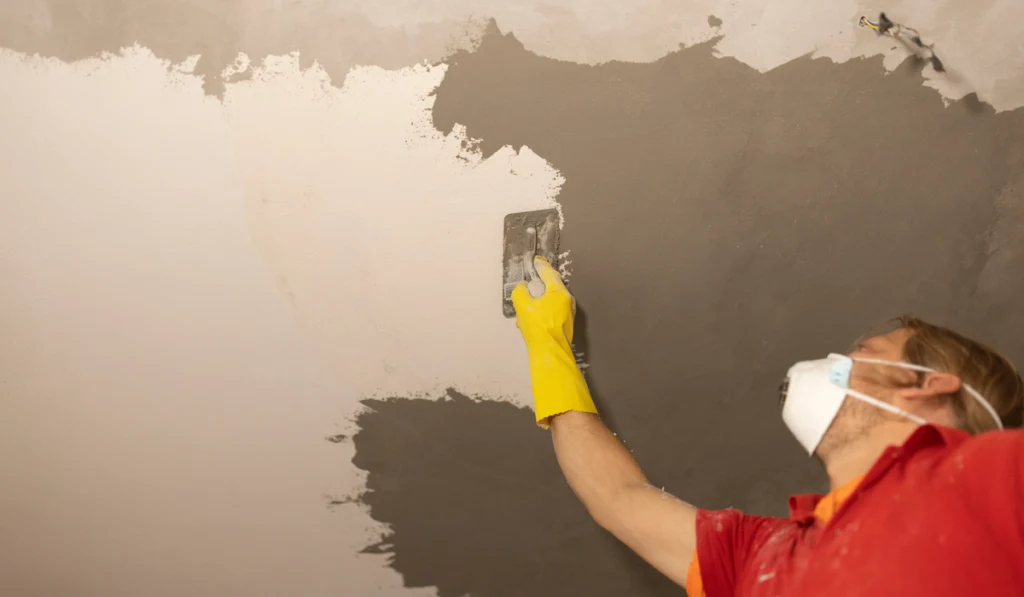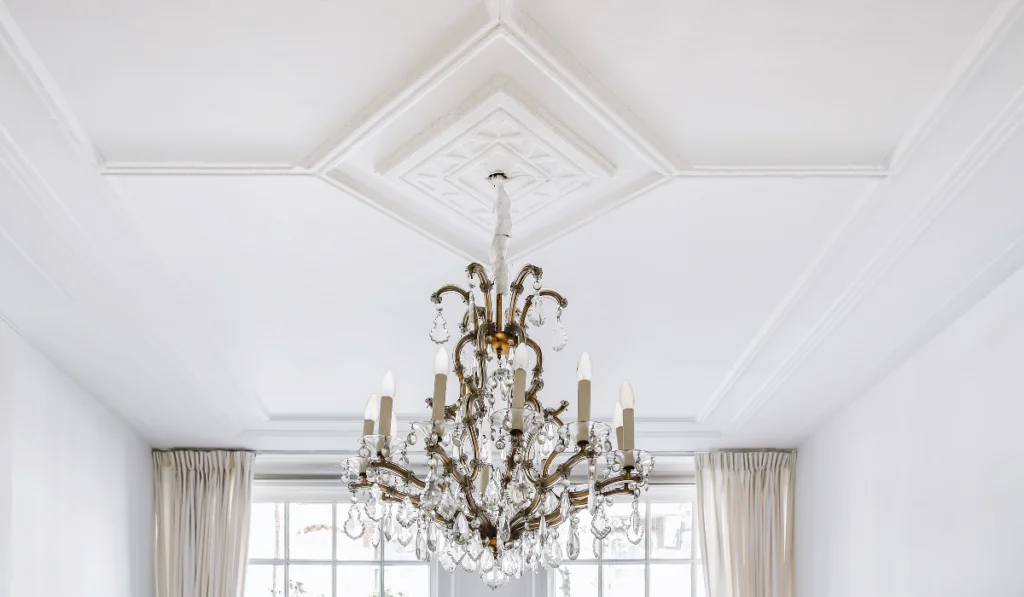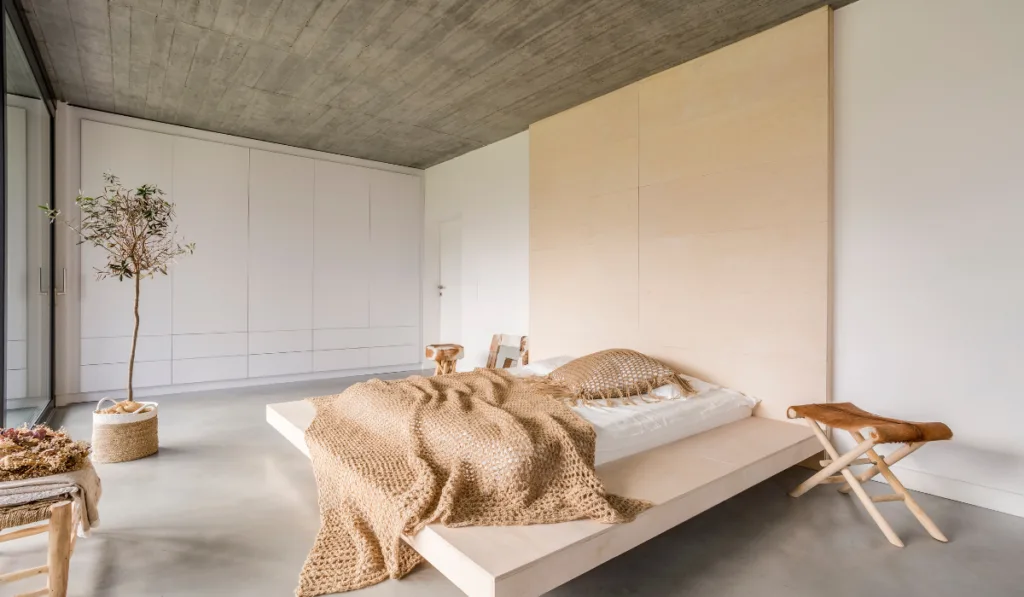*This post may have affiliate links, which means I may receive commissions if you choose to purchase through links I provide (at no extra cost to you). As an Amazon Associate, I earn from qualifying purchases. Please read my disclaimer for additional details.
If you’re looking to renovate your house or buy your own place, there are many things to consider before finalizing your big purchase. But what concerns many people is how the ceilings look.
Ceilings are considered one of the interior design components that could make or break the room’s beauty.
Aside from adding a personal touch to the design, they also control light diffusion while insulating the room. Certain ceiling materials provide soundproofing benefits.

There are many types of ceilings that you can find, including the simplest ones, such as smooth ceilings. But you may wonder what makes smooth ceilings different from other types of ceilings.
Are smooth ceilings worth it?
If you’re looking to rent for a long time or planning to purchase your own house, then having smooth ceilings is worth it. You should also expect to pay between $225 and $545 per 250 square feet of ceiling.
Table of Contents
10 Things to Know Before You Choose a Smooth Ceiling
Here are ten things you should know before choosing smooth ceilings for your home.
Adds Illusion of Height
Smooth ceilings provide visual height to your rooms.
This is because the smooth surface is physically flat and completely level. So, it creates the illusion that the ceilings are slightly higher than they actually are.
A smooth ceiling is suitable for small rooms with less space or large rooms with too much furniture.
Easy to Clean
Smooth ceilings are easier and quicker to clean.
Unlike other textured ceilings, they don’t trap dust. Smooth ceilings are designed to have a clean appeal and polished look.
Modern Look
If you’re into modern interior design and contemporary concepts, achieving this type of look with smooth ceilings is much easier.
Easy Repairs
Unlike other ceilings with complex and intricate details, repairing smooth ceilings is fairly easy.
You don’t have to work really hard to ensure the repair has a special texture since the ceiling is already smooth.
Reflects Light Better
Smooth ceilings reflect natural light better than other types of ceilings. If you’re looking to light up the whole room with a ceiling lamp or even natural sunlight, go for smooth ceilings.
Not Soundproof
Smooth ceilings don’t offer any soundproofing to your room.
If you want a studio or recording room in your house, you might need to insulate the walls with acoustic panels and other soundproofing materials.
Doesn’t Hide Imperfections
It is hard to get a truly smooth ceiling.
A lot of work must be done beforehand, such as filling all the holes or cracks, sanding the drywall seams evenly, and finishing them with a thin layer of plaster.

Easy to Match with Interior Design
Smooth ceilings are easy to match with different furniture and interior design styles. They look simple yet offer a lot of flexibility for creative work.
Timeless Style
Most of the time, having smooth ceilings in your house can increase its market value: They don’t go out of style as fast as textured ceilings.
Mold and Mildew Resistant
Many latest versions of smooth ceilings are resistant to mold and mildew. When mold or mildew can’t grow, it drastically increases the air quality inside the room.
Are There Other Options Besides Smooth Ceilings?

When it comes to ceiling textures, your options aren’t limited to smooth ceilings.
There are other types of ceiling textures that you can choose based on your personal preference. Each type of texture has its pros and cons.
Here are five other ceiling texture options you can choose for your home.
Slap-Brush Ceiling Texture
Also known as stipple, crow’s foot, and stomp brush texture, this type of finish is achieved using a premixed joint compound. You only need a roller and a texture brush to create this texture.
Your ceilings might look messier than usual, but once the compound has dried, the texture will look unique according to how you press the texture brush during the process.
Popcorn Ceiling Texture
A popcorn ceiling is also known as an acoustic ceiling due to its ability to absorb noise and echoes inside of the room.
This type of ceiling has a bumpy surface created from a combination of polystyrene and drywall compounds. The texture may also resemble popcorn or cottage cheese.
Popcorn texturing can also hide imperfections such as small holes, cracks, or defects on the ceilings. However, unlike a smooth ceiling, it traps dust and dirt more easily and is harder to clean.
Knockdown Ceiling Texture
Knockdown texturing can be achieved by spreading blotches of joint compound with a trowel or spraying a watered-down joint compound on the ceilings.
A stuccoed texture will also be created when stalactite-like textures form after spraying the compound.
Similar to popcorn texturing, a knockdown finish can hide imperfections on the ceilings. However, finishing the work requires a lot of time and energy.
Skip-Trowel Ceiling Texture
Skip-trowel ceiling texture might look similar to knockdown ceiling texture. Skip trowel texturing resembles a medium stucco finish. However, the texture is spread out more than those two textures.
To achieve this finish, you need a trowel and drywall mud. Skip trowel texturing can also be applied to stucco, drywall, and plaster finishes.
Orange-Peel Ceiling Texture
This type of texture resembles the popcorn texture but has a softer appeal when you touch it.
To create this bumpy texture, you must prime the ceiling using suitable paint before spraying the surface with a drywall compound.
Once the texture has dried, paint over the surface with primer before finishing with the last layer of paint.
Final Thoughts

Choosing to have smooth ceilings for your house is a subjective choice. There is no right or wrong answer.
If you prefer a minimalistic concept for your interior design, then smooth ceilings would be your best option. They are easy to pair with different types of modern and minimalist furniture.
But if you’re a perfectionist, having smooth ceilings might not be ideal because visible imperfections are more evident with this type of ceiling.
Citations
- https://www.surepropainting.com/2020/01/20/textured-ceilings-vs-smooth-whats-the-better-option/
- https://www.fixr.com/comparisons/popcorn-smooth-ceiling
- https://www.hunker.com/13411794/textured-ceilings-vs-smooth-ceilings
- https://www.finefinishwallsystems.com/5-reasons-to-smooth-your-ceilings/
- https://askinglot.com/are-smooth-ceilings-worth-it
- https://upgradedhome.com/knock-down-ceiling-vs-smooth-ceilings/
